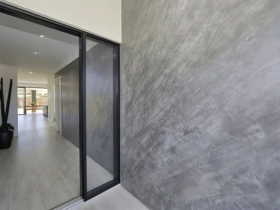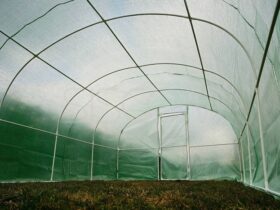This material appeared more recently in the building materials market, but immediately became very in demand by many designers. What is the reason for this success, and what is a flexible stone? By nature, this is natural material. A thin cut of sandstone is attached to a textile basis, which is perfectly adapt to any surface using special glue. Unlike ordinary stone, the flexible stone is plastic, because the sandstone particles are located at some distance from each other, which means that it can be bent and folded as you like.Thus, they received material that outwardly not distinguishable from ordinary stone, but capable of taking any shape, whether it be a ball, cube, pyramid, and so on. Now it all depends solely on your imagination: a medieval lock with turasnses or a pirate cave with treasures — nothing is impossible. Therefore, builders and designers became interested in such grateful material, and successfully use it for internal and external finishing work. A flexible stone is remarkably combined with other textures (wood, brick, forged iron), so it is often used to decorate fireplaces, arches, stairs, columns, walls. It can be used even as a floor covering, together with the «warm floor» system. In suburban construction, flexible stone is simply indispensable today, because the time for typical buildings has sunk into oblivion. Today is the rule «My house is my fortress». Here in the fortress in the literal sense of the word flexible stone and will help turn your home. At least outwardly.
The pluses of flexible stone.
Among other things, the material is much lighter than ordinary stone (about 5 kg/sq. m). For decoration of facades, it is also good: a unique pattern on the cut gives the surface a noble view. The widest palette also contributes to the successful use of flexible stone: about 260 shades are possible. Thus, you can easily find a suitable option for decorating both the object under construction and ready.But excellent plasticity the advantages of flexible stone do not end. This material is very durable, it is not terrible either mechanical influences or aggressive influences of the external environment. High temperatures, low, sharp temperature changes (-30 ° C, +65 ° C), rain, wind-a surface decorated with a flexible stone will cope with any adverse factor. No wonder manufacturers give a guarantee for material up to 35 years, however, with a reservation, that the styling should be performed certified specialists.Natural origin.
Natural origin, absolute non -combustibility, environmental friendliness, unique properties, a large palette of shades, a noble appearance — all this allowed a flexible stone to take its rather large niche in finishing work. Facing saunas, pools, decoration of houses, even in landscape design, flexible stone found its application. Among other things, a flexible stone is absolutely not toxic, because this is a natural material. So, it will not harm either the environment or human health.
Installation of flexible stone.
The installation of flexible stone is very simple: a gear spatula on the base and the decorated surface is applied with a layer of glue, then the material is pressed to the surface. You can adjust the shape with an ordinary stationery knife. And to make the surface seamless, the edges of the material are heated by a building hairdryer. The same technique is used when decorating objects of irregular shape (columns, arch). Upon completion of the work, the surface of the flexible stone should be covered with a special hydrophobic composition for reliable protection against moisture.Thus, using a flexible stone, we will be able to implement the most daring design decisions to make our house truly cozy and comfortable, and live in harmony with ourselves and with nature.











Оставить коммент.